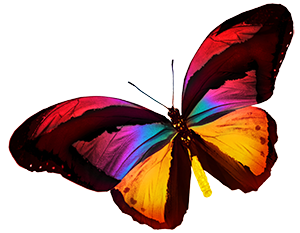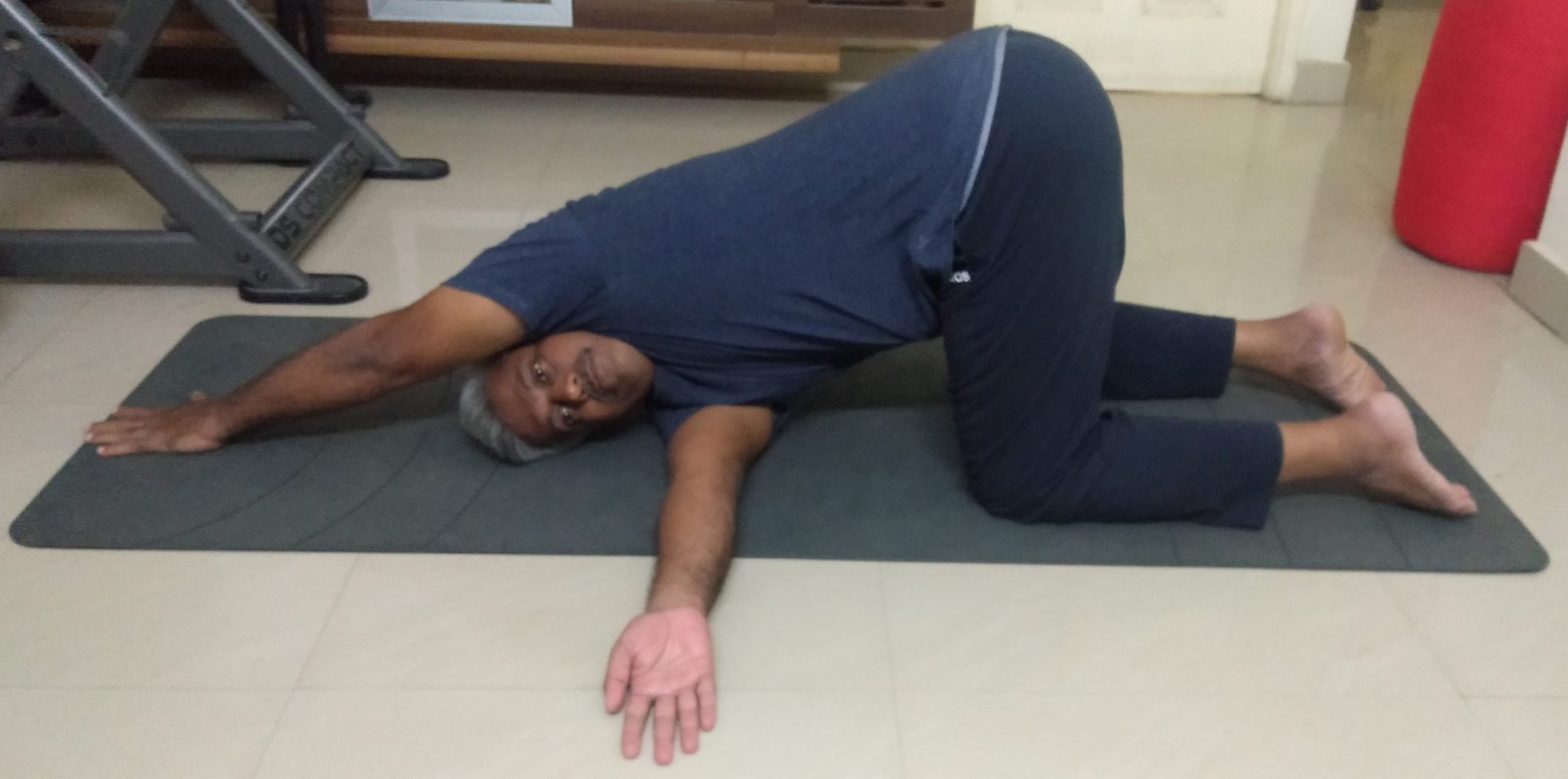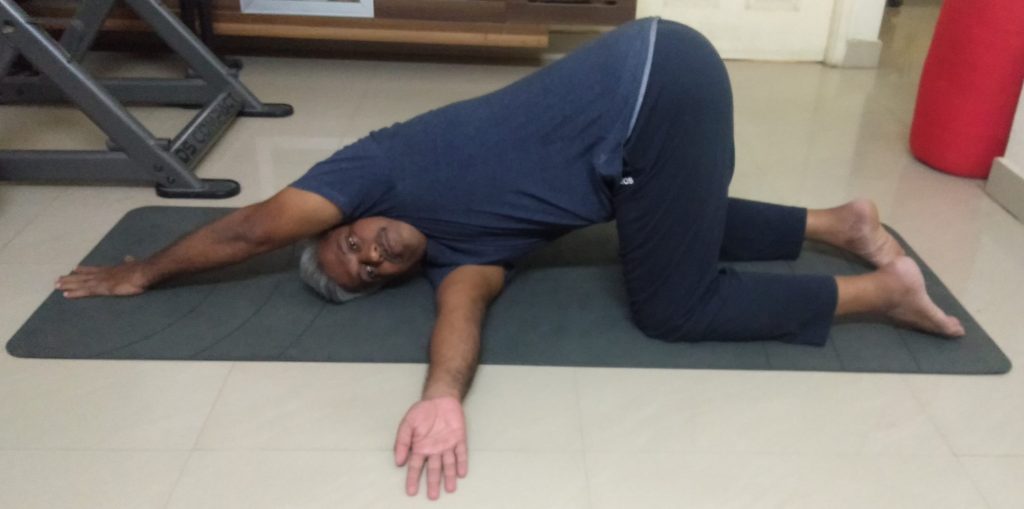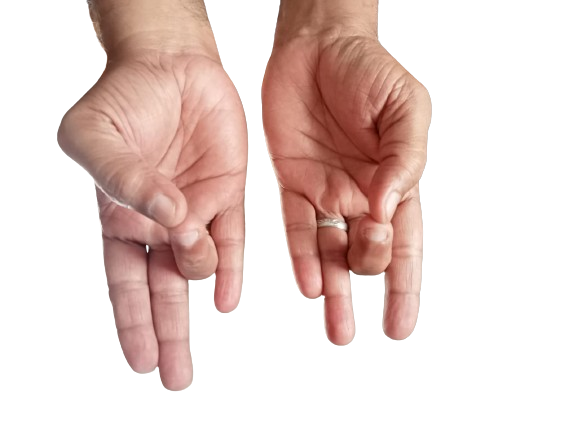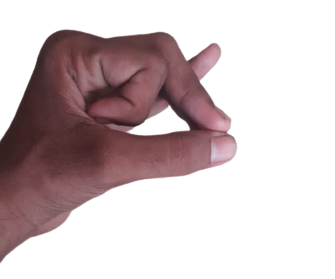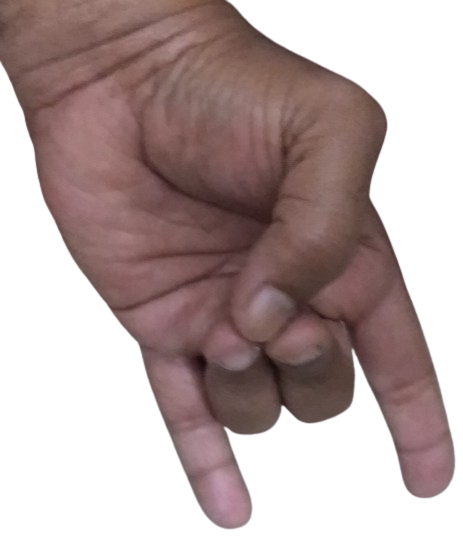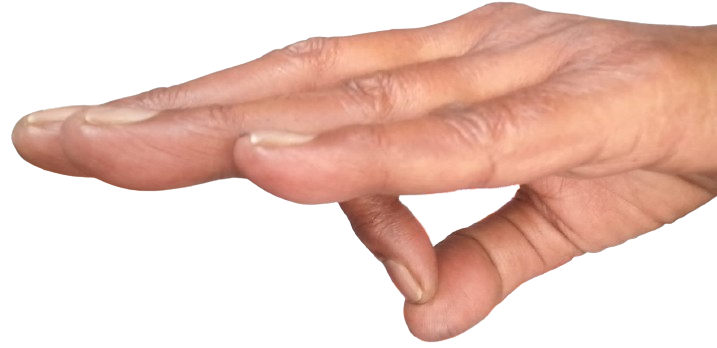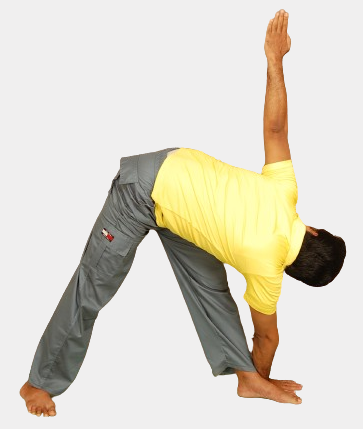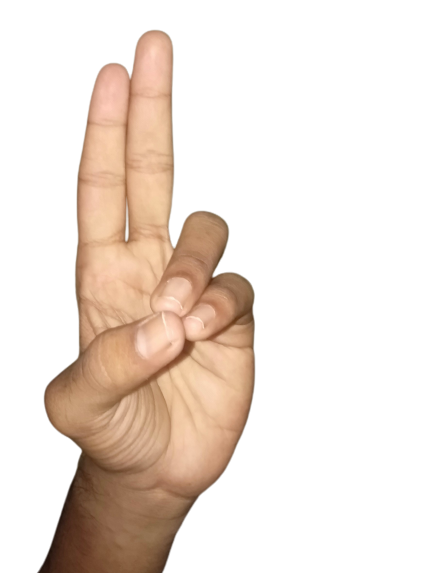'Parsva' in Sanskrit means 'side' and 'bala' means 'child'. The pose is performed in Child Pose or in variation of Child Pose with the upper back twisted and hence it is named as Parsva Balasana.
Thread the Needle Pose stimulates manipura chakra. Manipura attracts universal energy, develops self-esteem and is also effective in promoting mental calm.
Other Benefits of Thread the Needle Pose
- Flexibility of spine improves
- Strengthens upper back muscles
- Increases hip flexibility and strengthens hip muscles
- Strengthens upper chest muscles
- Stretches the shoulders
- Regular practice of the pose improves digestion
- Relieves physical and mental fatigue
Instructions
- Go on fours.
- Exhale as you slide your right hand under your left and stretch it towards the left side. The palm should be facing upwards.
- Place the right shoulder on the mat and stretch the right hand further towards the left. Place the right side of your face on the floor and look straight. Alternately, you can turn your head upwards and look at the ceiling.
- Stretch your left hand behind your head.
- Hold the pose for 30 seconds to one minute.
- Release the pose, return to starting position and repeat the same on the other side.
Note
Thread the Needle Pose can be performed assuming Child Pose. Visit this page to learn about Child Pose and its benefits.
In case of pain in shoulder or knees, you can place a folded blanket under your shoulder/knees.
Those with severe spine conditions, high or low blood pressure, severe pain in neck or shoulders should refrain from practicing the pose.
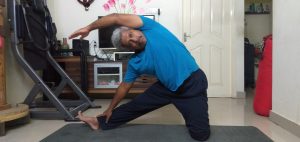
Yoga Pose for Day 66 - Gate Pose (Parighasana)
Gate Pose is called Parighasana in Sanskrit. 'Parigha' means 'beam'. Performing the pose on a regular basis promotes optimum health.
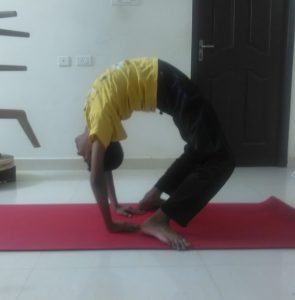
Yoga Pose for Day 64 - Wheel Pose (Chakrasana)
Wheel Pose is one of the challenging back bend yoga poses. It is called Chakrasana in Sanskrit. 'Chakra' means 'wheel'. It goes without saying why the pose is named thus.
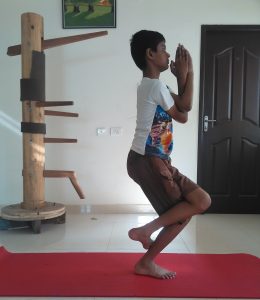
Yoga Pose for Day 63 - Eagle Pose (Garudasana)
நின்று செய்யும் ஆசனங்களில் விருஷாசனம் போன்றே ஒற்றைக் காலில் நின்று செய்யப்படுவது கருடாசனம். வடமொழியில் ‘கருட’ என்றால் ‘கருடன்’ அல்லது ‘கழுகு’ என்று பொருள். கருடாசனம் ஆங்கிலத்தில் Eagle Pose என்று அழைக்கப்படுகிறது. விருஷாசனம்
